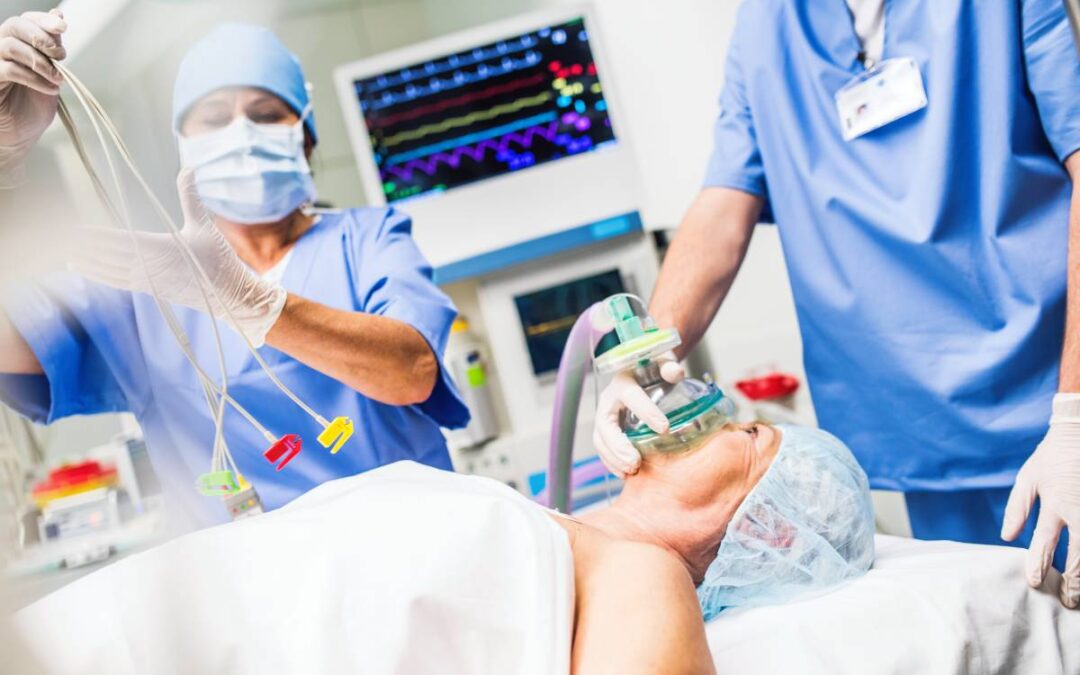Patient movement under sedation is a significant concern during procedures that require precise technique or that can be harmful to patients if disrupted. Managing this issue is crucial to ensure a safe, smooth, and successful procedure.
Sedation is the medically induced state of reduced consciousness created to allow patients to tolerate procedures that would otherwise be unpleasant or painful. It can range from light sedation, where patients remain awake and responsive, to deep sedation, where patients are nearly unconscious. Sedation is used for procedures ranging from colonoscopies to dental surgeries and to minor orthopedic operations.
There are several reasons that can lead to patient movement under sedation. Movement can be triggered by unexpected pain, discomfort, or involuntary reflexes. If the level, or “depth,” of sedation is too light, the patient may still be conscious enough to move, whether intentionally or reflexively. Sedation depth can vary, particularly if the drugs are metabolized faster than expected or if the dosing does not fully match the patient’s needs.1
Even under moderate to deep sedation, patients may still make reflexive movements like jerking or twitching. These movements are especially seen in response to stimuli like needle pricks, surgical manipulation or airway irritation. 2
Patient movement under sedation can have significant implications for both the patient and the procedure. For example, movement during precision-based procedures like eye surgeries or biopsies can disrupt the procedure and lead to poor surgical outcome. Movement can also cause injury to the patient or members of the healthcare team, especially when involving sharp instruments.3
Preventing movement is an integral part of anesthesia management. Several strategies are employed to minimize the risk of patient movement, including tailoring the sedation level per the patient’s needs and procedure type as well as using a combination of different types of analgesics.
If patient movement occurs despite preventative measures, prompt management is essential. Depending on the situation, anesthesia providers can use different strategies to intervene. If the patient is moving because they are under-sedated, deepening the sedation can help. This can involve administering additional sedative agents or increasing the infusion rate in continuous sedation cases. If the movement is pain-related, administering additional analgesics like fentanyl or ketamine can help address the pain and reduce movement. In cases of agitation or paradoxical reactions, agents like benzodiazepines can help calm the patient. In severe cases, conversion to general anesthesia from sedation may be required to ensure the procedure’s safety and efficacy.
In some cases, gentle physical stabilization, like surgical drapes or foam padding, can be used to minimize unintentional movement, typically in a way that is comfortable for the patient and does not restrict circulation. Under light sedation, patients are typically still responsive to voice. Instructing the patient to remain still and providing reassurance can help control voluntary movements in procedures where the patient is semi-conscious.
Patient movement under sedation poses a significant challenge to anesthesia providers and can compromise both patient safety and procedural outcomes. Through careful preoperative planning, individualized sedation and analgesia strategies, and vigilant monitoring during the procedure, the risk of movement can be minimized. If movement does occur, timely intervention is critical in ensuring safe and successful outcomes.
References
1. Practice Guidelines for Moderate Procedural Sedation and Analgesia 2018: A Report by the American Society of Anesthesiologists Task Force on Moderate Procedural Sedation and Analgesia, the American Association of Oral and Maxillofacial Surgeons, American College of Radiology, American Dental Association, American Society of Dentist Anesthesiologists, and Society of Interventional Radiology. Anesthesiology. 2018;128(3):437-479. doi:10.1097/ALN.0000000000002043
2. Grap MJ, Munro CL, Wetzel PA, et al. Sedation in adults receiving mechanical ventilation: physiological and comfort outcomes. Am J Crit Care. 2012;21(3):e53-e64. doi:10.4037/ajcc2012301
3. Amornyotin S. Sedation-related complications in gastrointestinal endoscopy. World J Gastrointest Endosc. 2013;5(11):527-533. doi:10.4253/wjge.v5.i11.527







Recent Comments